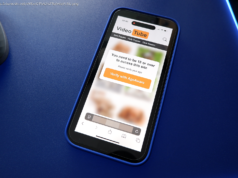The lower house will get an electronic chamber voting system next year, its leader Christopher Pyne has revealed.
The federal government has announced electronic voting will be introduced into the Parliament of Australia, with Leader of the House of Representatives Christopher Pyne confirming it will be implemented in the lower house next year.
« The implementation of electronic voting will reduce significantly the time required for each vote in the chamber, » Pyne said.
« Voting outcomes will be transparent, accurate, and known immediately, freeing up more time for important parliamentary business to be conducted each day the house sits.
« Electronic voting will also provide an electronic solution for recording division voting and improve online accessibility to division process and results. »
While the details are scarce at this stage, Pyne said the Department of Parliamentary Services will shortly call for tenders for the project, also giving « innovative » businesses and individuals an opportunity to contribute.
The initiative follows a 2016 report from the House of Representatives Standing Committee on Procedure recommending electronic voting be implemented.
Ahead of the 2016 federal election, the Flux Party was campaigning nationwide in a bid to see its 13 Senate candidates elected into the upper house with its blockchain-based democratisation platform in tow.
The idea was to have its elected candidates bring with them the Flux Voting Platform, a blockchain-based smartphone app that would allow the senator to share information with the electorate. Once the details of a Bill, for example, were shared with members or followers and they have had their opportunity to voice their opinion, the Flux Party representative would cast their vote based on citizen response.
The initiative was touted as « democracy as a service » by co-founder Max Kaye.
Electronic voting for citizens has previously been given bipartisan support with both Prime Minister Malcolm Turnbull and opposition leader Bill Shorten advocating for electronic voting following the 2016 federal election.
« We’re a grown up democracy, it shouldn’t be taking eight days to find out who’s won and who’s lost, » Shorten said while conceding the election, a week after polls closed. « I take nothing away from the professionalism of the Australian Electoral Commission, but it’s the 21st century. »
Previously, former chair of the electoral committee Tony Smith said he had considered electronic voting in detail but had changed his mind to oppose it.
« Australia is not in a position to introduce any large-scale system of electronic voting in the near future without catastrophically compromising our electoral integrity, » the Liberal MP, who is now speaker, said at the time.
In New South Wales, electronic voting already exists, with iVote being used at the last two state elections.
In 2015, around 19,000 people voted using the NSW system before an error was spotted that had removed the group voting boxes for the Outdoor Recreation Party and the Animal Liberation Party.
« There was no fault on the computer systems per se; it was a human error in data entry, » New South Wales Electoral Commission (NSWEC) former CIO Ian Brightwell told ZDNet at the time. « Unfortunately, at the time of going live, we didn’t have an opportunity to view the ballot paper. »
A month prior, a pair of security researchers found the analytics service used by iVote left voters vulnerable to having their ballots changed, as well as having the iVote site open to the FREAK attack.
However, the NSWEC said the researchers’ claims were overstated .
The Australian Electoral Commission has recently come under fire for being lacking on the security front with its ballot scanning system, provided by Fuji Xerox Businessforce, after the Australian National Audit Office (ANAO) said AEC ditched compliance with Australian government IT security frameworks and that insufficient attention was paid to assuring the security and integrity of the data generated both during and after operation.
Meanwhile, organisations such as Australia Post want to put citizen voting on a blockchain .
Electoral Commission exploring how technology can simplify voting process
Electronic lists containing citizens’ information at voting booths or smartphone apps for enrolled voters might already be in place if the Australian Electoral Commission had the cash, a House of Representatives committee has heard.
Australian Electoral Commission battens down the cyber hatches
In response to the alleged interference in the lead up to the 2016 US Presidential Election, the Australian Electoral Commission is working with Malcolm Turnbull’s cyber advisers to make sure it is prepared.
Blockchain startup makes Australian Senate play with democracy-as-a-service
The Flux Startup is making its Australian political debut, armed with 13 Senate candidates and a blockchain-based smartphone voting app that promises to transform democracy.
How the ABS prepared for the same-sex marriage survey using the public cloud
Given a go-live date from Prime Minister Malcolm Turnbull of around four weeks, the Australian Bureau of Statistics turned to AWS to run the online and call centre components of the same-sex marriage survey in the public cloud.






